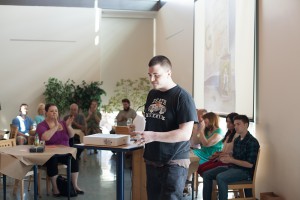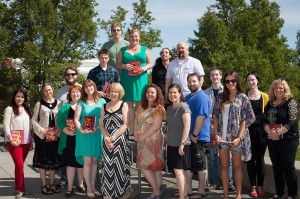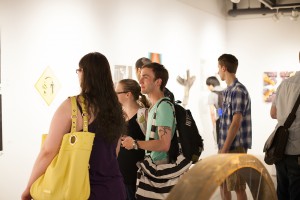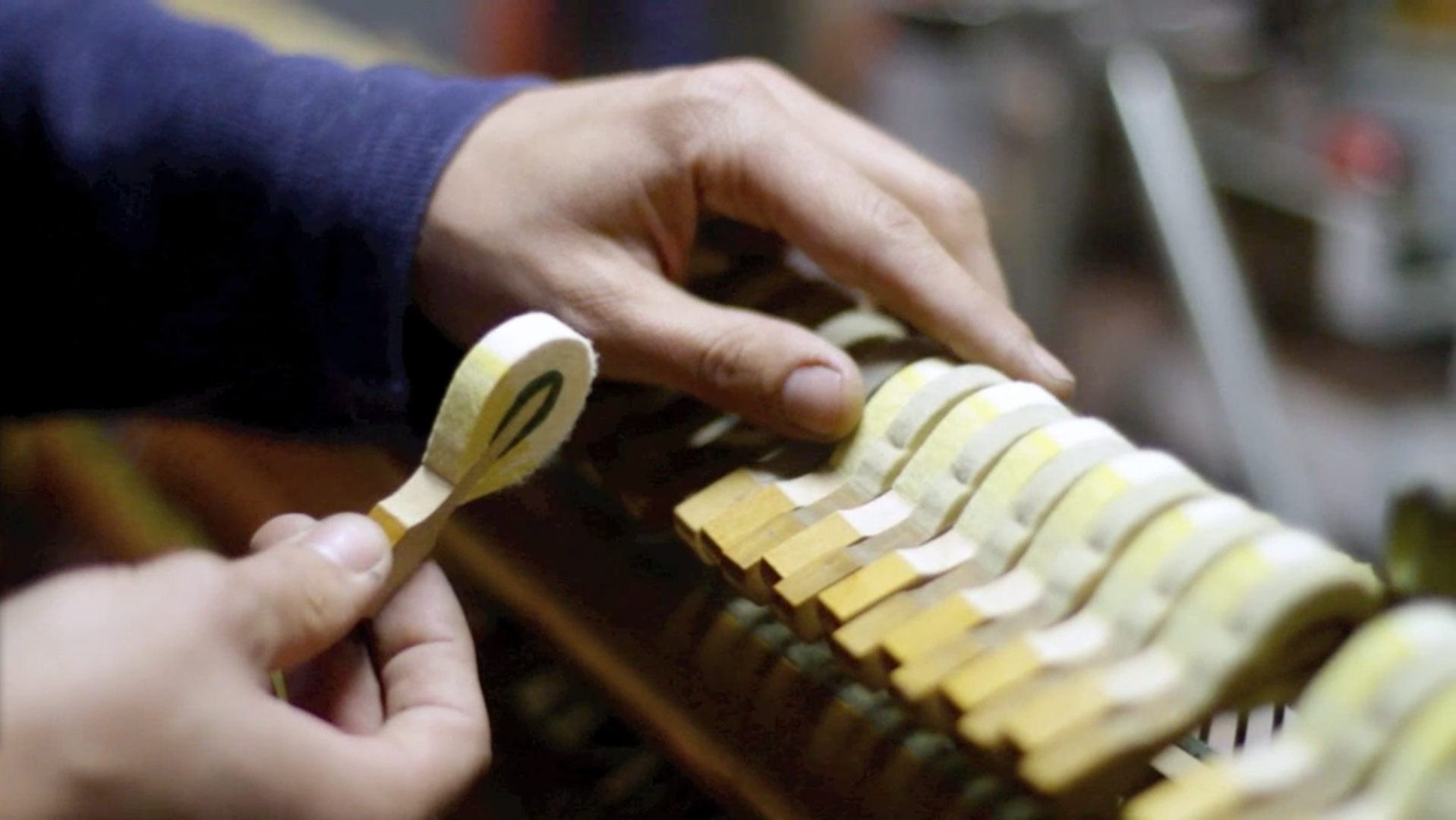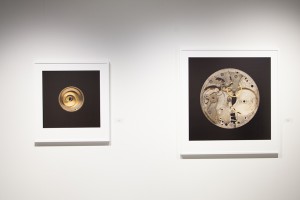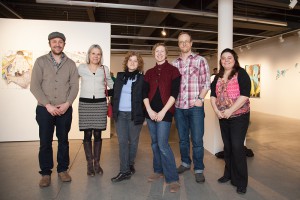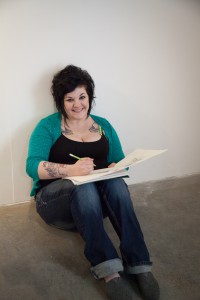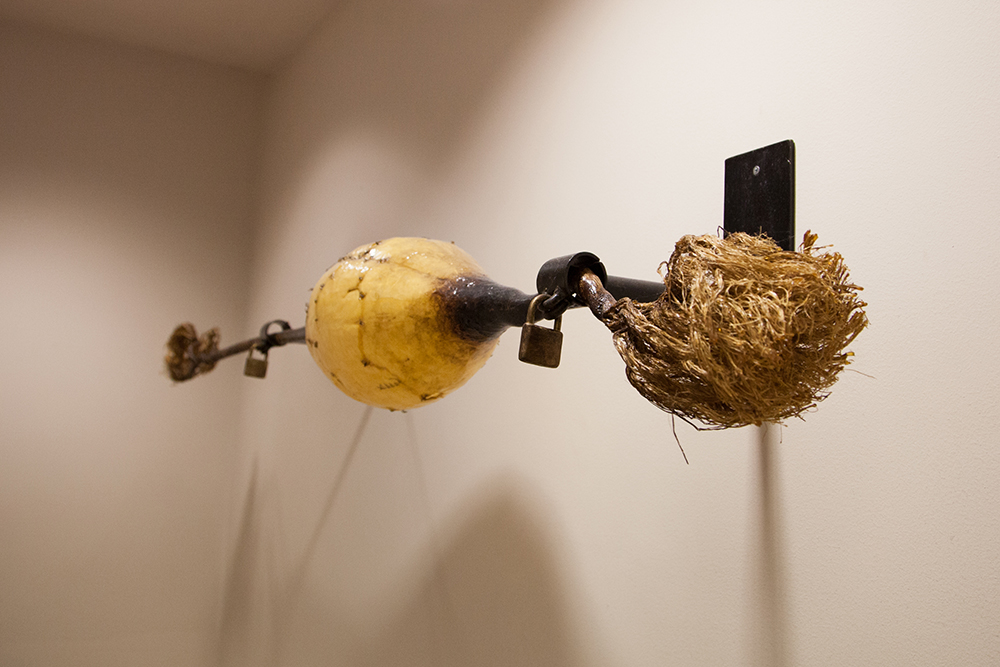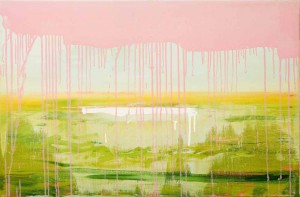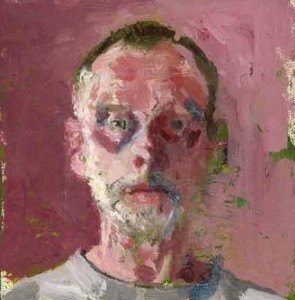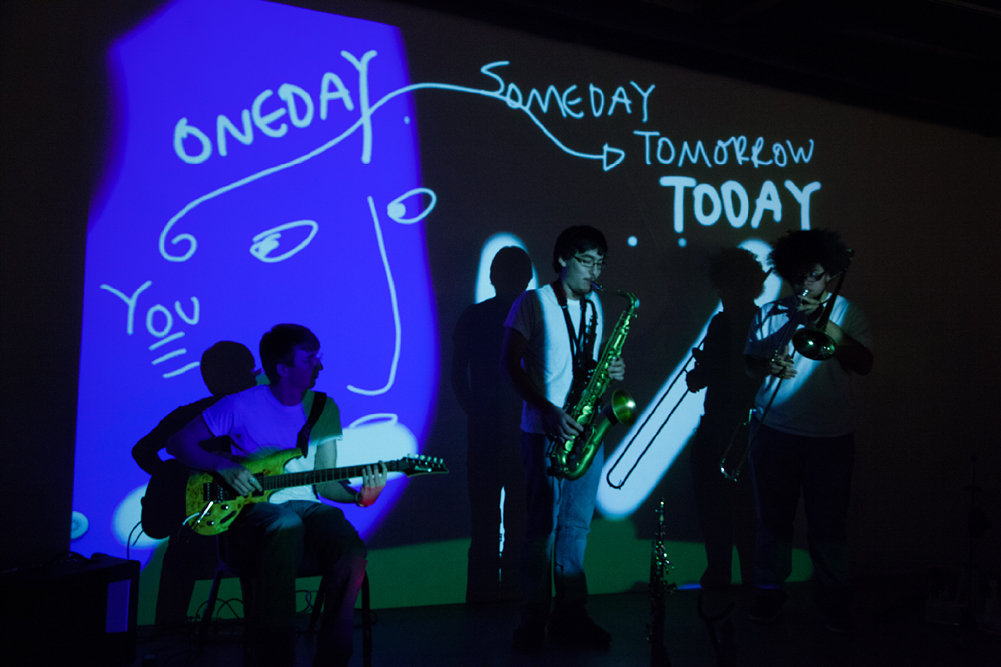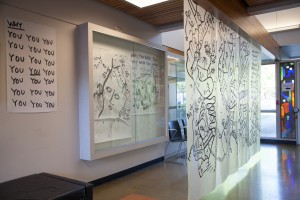Affairs of the Art
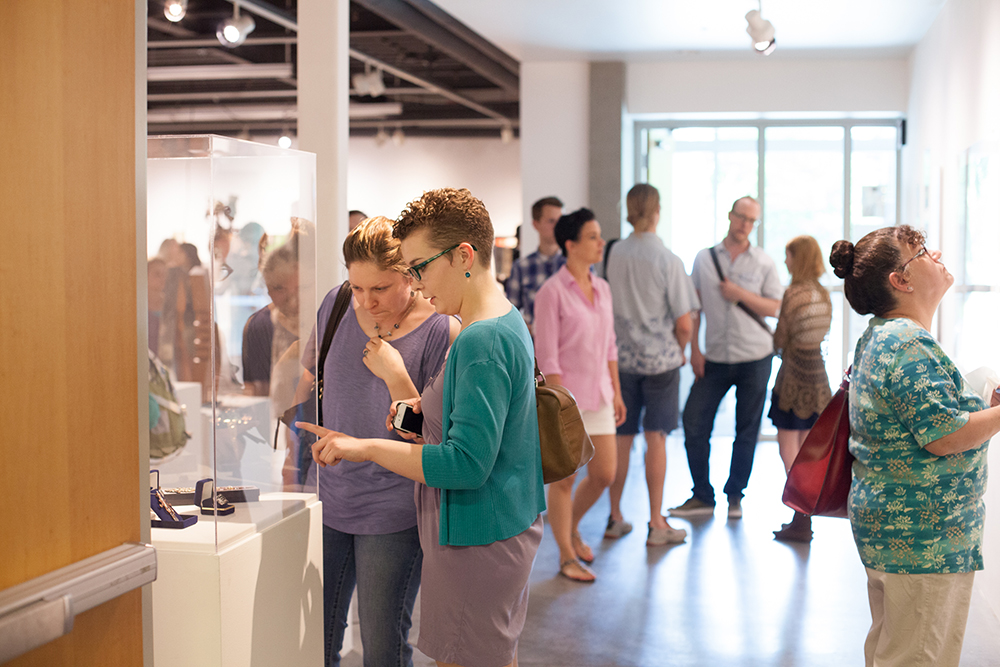 May 14 was a particularly artful day at Clark College, as the afternoon saw both the unveiling of the 2014 Phoenix as well as the opening reception and awards presentation for the 2014 Art Student Annual.
May 14 was a particularly artful day at Clark College, as the afternoon saw both the unveiling of the 2014 Phoenix as well as the opening reception and awards presentation for the 2014 Art Student Annual.
Phoenix staff distributed free copies of the award-winning annual arts and literary journal to students in PUB 161. Clark student Mike Shank read from his moving poem, “Small Things Cost the Most,” which earned Editors’ Choice Award for literary work in the journal. Afterward, guests headed downstairs to Archer Gallery to view works by student artists, many of whom also had work published in Phoenix. Seventy-five students showed a total of 127 works in the show, in media as varied as watercolor, photography, welded metal, ceramics, and video. Awards were announced and presented during the reception.
For more photos of these events, visit our Flickr albums of the unveiling and art show.
2014 Art Student Annual Awards
Joy Margheim “Gate”, welded sculpture
Best Welded Sculpture award
Sponsored by Airgas and the Clark College Welding Department
Irina Burchak “Self Portraits”, photography
Excellence in Photography Award
Sponsored by Knight Camera
Erin Merrill, “Columbia River Series”, photography
Excellence in Photography Award
Sponsored by Pro Photo Supply
Shelby Warner “Drawing Room Chair”, photography
Photography Award
Sponsored by Pro Photo Supply
Garry Bastian “The Act of Characterization”, photography
Darkroom Photo Award
Sponsored by Blue Moon Camera and Machine
Anthony Abruzzini “There’s Nothing Wrong with Having Only One Eye…”, drawing
Works on Paper Excellence Award
Sponsored by Frame Central Framing
Sherrie Masters “Greys”, watercolor
Works on Paper Excellence Award
Sponsored by Frame Central Framing
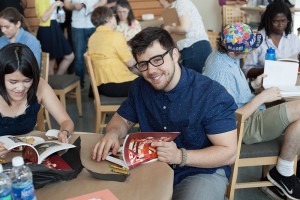
Students at the Phoenix unveiling waited patiently until the end of the program to open the paper wrapping around the new publication.
Jenny Avens “Flour Effect”, photography
Holga Camera Award
Sponsored by Freestyle Photographic Supplies
Lauren Dwyer “Organic Free Form”, ceramic
Best Ceramics Award
Sponsored by Georgie’s Ceramic and Clay Company
Luke Entwistle “Puntitled”, painting
Muse Art Award
Sponsored by Muse Art and Design
Krista Zimmerman “Self Obstruction”, painting
Muse Art Award
Sponsored by Muse Art and Design
Liz Alexander “Out of Place”, video
Film and Video Award
Sponsored by the NW Film Center
Anni Becker “John”, video
Film and Video Award
Sponsored by the NW Film Center
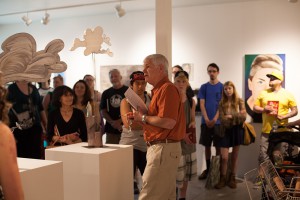
Director of IT Services, Phil Sheehan was the asked to juror the student show this year. He has been a supporter of student work throughout his time at Clark.
Riley Donahue, “The Day I Became a Man”, installation
Best Contemporary Art Award
Sponsored by the Portland Institute for Contemporary Art
Belinda Luce “Type in The City”, typography
Best Graphics Award
Sponsored by Intel
Filip Popa “Matches”, painting
Painting Award
Sponsored by Dick Blick Art Materials and the Clark College Bookstore
Jeremy Crane “Germ Evolved”, painting
Painting Award
Sponsored by Dick Blick Art Materials and the Clark College Bookstore
Elise Cryder “Thank Your Mother”, painting
Best in Show Award
Painting Award
Sponsored by the Clark College Bookstore and the NW Film Center
Mariah Lewis “Muse”, painting
Painting Award
Sponsored by the Clark College Bookstore
Martin Stone “Still Life #2”, painting
Painting Award
Sponsored by the Clark College Bookstore
Megan Ostby “30 Minute Pose”, drawing
Drawing Award
Sponsored by the Clark College Bookstore
Jason Cardenas “The Island”, drawing
Drawing Award
Sponsored by the Clark College Bookstore
Lauren Pucci “Botany”, watercolor
Special Recognition Award
Sponsored by Kiggins Theater and Anna Banana’s Café
Grace Edwards “Sun Color”, watercolor
Special Recognition Award
Sponsored by Kiggins Theater and Anna Banana’s Café
Sara Robison “Hipster George”, digital illustration
Special Recognition Award
Sponsored by Kiggins Theater and Anna Banana’s Café
Matthew Caravaggio “Abstract Revelation”, drawing
Special Recognition Award
Sponsored by Kiggins Theater
Michael Jasso “For the Glory of Rome”, ceramics
Special Recognition Award
Sponsored by Kiggins Theater
Photos: Clark College/Jenny Shadley
